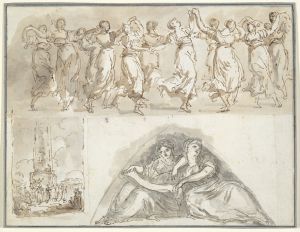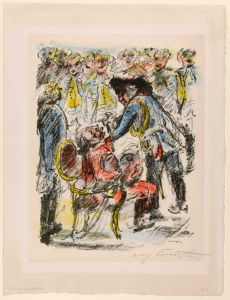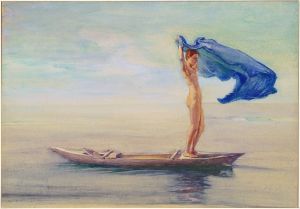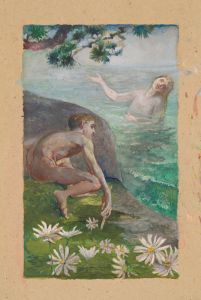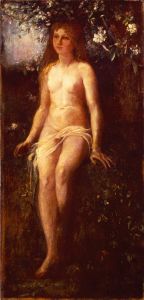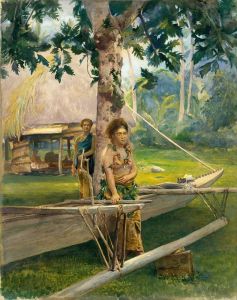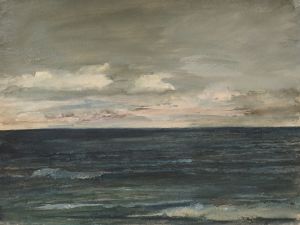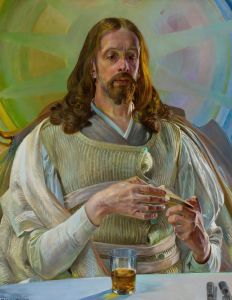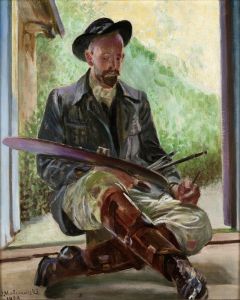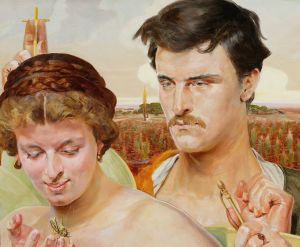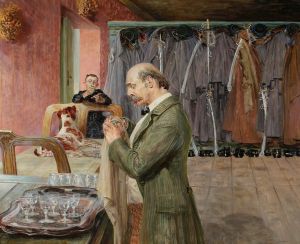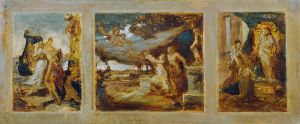
Siva Dance; Triptych of Seated Single Figures
A hand-painted replica of John La Farge’s masterpiece Siva Dance; Triptych of Seated Single Figures, meticulously crafted by professional artists to capture the true essence of the original. Each piece is created with museum-quality canvas and rare mineral pigments, carefully painted by experienced artists with delicate brushstrokes and rich, layered colors to perfectly recreate the texture of the original artwork. Unlike machine-printed reproductions, this hand-painted version brings the painting to life, infused with the artist’s emotions and skill in every stroke. Whether for personal collection or home decoration, it instantly elevates the artistic atmosphere of any space.
John La Farge's Siva Dance; Triptych of Seated Single Figures is a notable work by the American artist and decorative painter John La Farge (1835–1910). La Farge was renowned for his contributions to American art in the late 19th century, particularly for his innovations in stained glass and his interest in incorporating diverse cultural and religious themes into his work. This particular piece reflects La Farge's fascination with Asian art and spirituality, which became a recurring theme in his artistic career.
The painting, created in 1887, is a triptych, a three-paneled artwork, which was a format often associated with religious or spiritual themes in Western art history. The central panel of the triptych depicts the Hindu deity Shiva (Siva) in a dynamic pose, often interpreted as the cosmic dance, or Nataraja. This dance symbolizes the cycle of creation, preservation, and destruction in Hindu cosmology. The two side panels feature seated single figures, which are believed to represent meditative or contemplative states, complementing the central theme of cosmic balance and spiritual energy.
La Farge's interest in Hindu iconography was likely influenced by his travels and exposure to Asian art and philosophy. He was deeply inspired by the aesthetics and spiritual depth of Eastern traditions, which he sought to integrate into his work. This painting is an example of his ability to blend Western artistic techniques with Eastern themes, creating a unique synthesis that was ahead of its time in the context of 19th-century American art.
The triptych is executed with La Farge's characteristic attention to detail and use of vibrant colors. His mastery of light and texture is evident in the way he renders the figures and their surroundings, creating a sense of depth and movement. The work also reflects his interest in symbolism, as each element of the composition contributes to the overarching narrative of spiritual harmony and cosmic order.
Siva Dance; Triptych of Seated Single Figures is part of La Farge's broader body of work that explores cross-cultural themes and the universality of spiritual expression. While the painting is less widely known compared to some of his other works, it remains an important example of his innovative approach to art and his ability to bridge cultural divides through visual storytelling.
The current location of the painting is not widely documented, and further details about its provenance or exhibition history are limited. However, it stands as a testament to La Farge's artistic vision and his role in introducing non-Western themes into American art during a period when such influences were relatively uncommon.





